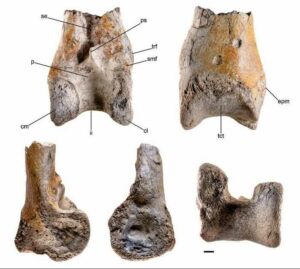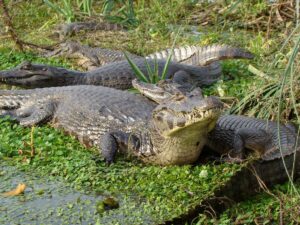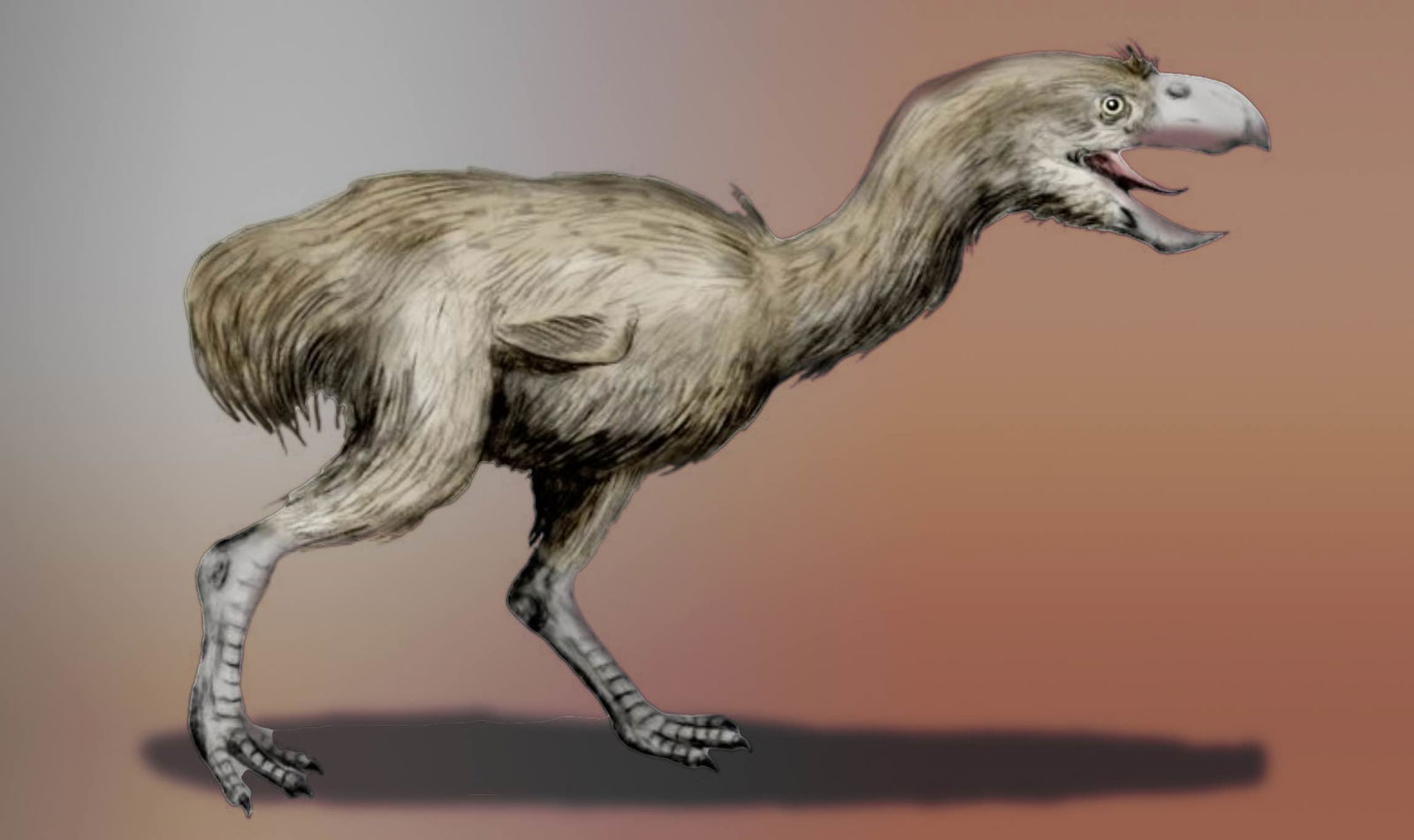A new variety of the massive avian predators known as “terror birds,” which once roamed the South American landscape to hunt for prey, has been identified by scientists.
Analysis of a fossilized leg bone discovered two decades ago has revealed it to be the lower leg bone of a Phorusrhacidae, an ancient bird that researchers believe was nearly ten feet tall. This measurement would make it the largest known example of this now-extinct species.
Led by Federico J. Degrange, a terror bird specialist, and including Siobhán Cooke, Ph.D., associate professor of functional anatomy and evolution at the Johns Hopkins University School of Medicine, the study also concluded that the new terror bird fossil is the northernmost example found in South America.
The bone was initially discovered nearly 20 years ago by Cesar Augusto Perdomo, curator of the Museo La Tormenta in the Tatacoa Desert in Colombia, which lies at the northern tip of the South American continent. Due to the large number of fossils in the region, Perdomo didn’t immediately recognize the bone belonged to this massive predator.
Massive Predator Ate Other Animals
According to Cooke, these meat-eating terror birds lived among primates, hoofed mammals, giant ground sloths, and even glyptodonts, a distant relative of modern-day armadillos that were the size of a car. The new analysis of the bone did not reveal which of these animals the terror bird dined on, but she suspects this wingless massive predator was willing to kill and eat almost any prey it could find.
“Terror birds lived on the ground, had limbs adapted for running, and mostly ate other animals,” Cooke explained.
Using a portable scanner to create a three-dimensional virtual model, the researchers analyzed the fossilized leg bone in unprecedented detail. The scans revealed pitting on the bone’s surface, a telltale sign that it was a terror bird.


The team also found what appeared to be teeth marks from a distant relative of the alligator, the caiman. The marks were severe enough that the researchers suspect they may have led to the massive predator’s death.
“We suspect that the terror bird would have died as a result of its injuries given the size of crocodilians 12 million years ago,” Cooke explained.


Since fossils of terror birds are rare, the team believes it may have been “uncommon” on the South American landscape. However, they also suspect other fossils may have already been found but have yet to be identified since they are smaller or less complete than this particular sample.
“It’s possible there are fossils in existing collections that haven’t been recognized yet as terror birds because the bones are less diagnostic than the lower leg bone we found,” Cooke explained.
A View of Life 12 Million Years Ago
Ultimately, the team believes that finding this particular terror bird so far north is significant on its own, especially considering it may represent the largest example of its species ever found. For Cooke, discovering the presence of this massive predator that roamed the Columbian desert over 12 million years ago has also offered scientists a unique view into this ancient land.
“It’s a different kind of ecosystem than we see today or in other parts of the world during a period before South and North America were connected,” she said. “It would have been a fascinating place to walk around and see all of these now-extinct animals.”
The study “A Gigantic New Terror Bird (Cariamiformes, Phorusrhacidae) from middle Miocene tropical environments of La Venta in Northern South America” was published in Palaeontology.
Christopher Plain is a Science Fiction and Fantasy novelist and Head Science Writer at The Debrief. Follow and connect with him on X, learn about his books at plainfiction.com, or email him directly at christopher@thedebrief.org.

